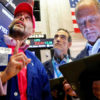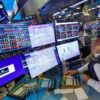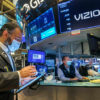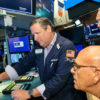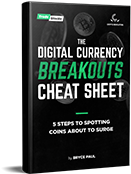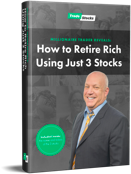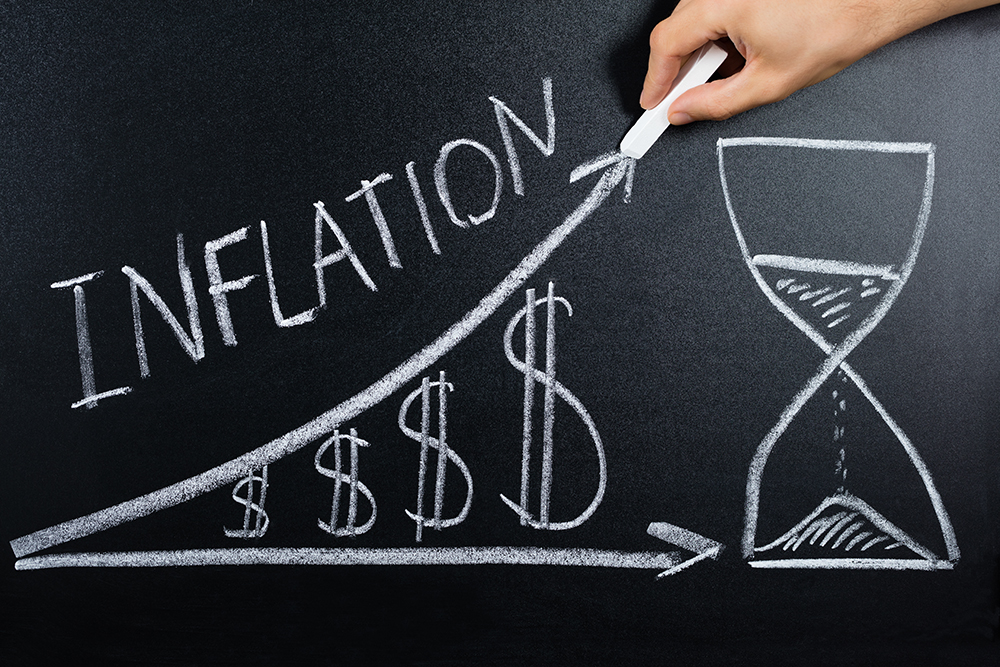
How to Profit from the Coming Rebound in Interest Rates
With each passing week, we are seeing the signs of inflation pop in the U.S. economy. The trend took root in mid-September when the Bureau of Labor Statistics (BLS) announced that the consumer price index (CPI) rose by a larger-than expected 0.4% sequentially in August (compared to a consensus forecast of 0.3%). The inflation uptick was led by a 5.4% increase in the price of used cars — in just one month.
Economists like to look at “core price” trends, which exclude volatile items like food and energy prices. That BLS report suggested that core prices had risen 1.7% in the prior 12 months, edging closer to the 2.0% limit that the Federal Reserve considers to be a threshold before concerns strengthen about inflation.
Alberto Cavallo, a well-regarded economist at the National Bureau of Economic Research (NBER) recently looked at cost pressures and found that official government measures of price changes underestimate the level of inflation. His conclusion: “The difference is significant and growing over time, as social-distancing rules and behaviors are making consumers spend relatively more on food and other categories with rising inflation, and relatively less on transportation and other categories experiencing significant deflation.”
Fast forward to November and the Institute for Supply Management (ISM) noted that prices that manufacturers pay for raw materials and subcomponents jumped to the highest levels since 2012. Eventually, manufacturers feel compelled to pass on those other costs to end buyers.
To get a sense of where we may be headed in terms of inflation, I like to look at the St. Louis Fed’s five-year forward inflation expectation rate. The figure slipped below 1.0% when the Covid-19 pandemic first took root. Since then, it has steadily risen and now approaches 2.0%. That figure may not sound scary, but it’s the trend that counts. Once inflationary trends start in an economy, they can start to build on themselves, as we saw in the 1970s.
This isn’t to suggest that we’re headed back to the era of disco. Nor is it to suggest that the Fed is about to sharply raise interest rates. But remember that so many lending rates in our country are tied to market forces, and not the Fed. For example, 10-year Treasury rates are much better at reflecting inflation trends than short-term rates, such as 2-year Treasuries. Instruments like mortgages, auto loans and credit cards are often tied to these longer rates. And it’s notable that the gap between the 2-year and 10-year yields widened for 12 straight sessions in late November and early December.
The spread between these two yields is now at 0.79%, the largest since 2017.
Eventually, any pick-up in inflation and interest rates will have significant impacts on the fixed-income part of your portfolios. In the near-term, rising rates lead the value of bonds and bond funds to fall (as bond prices and bond yields go in the opposite directions). And stocks that are favored for their solid dividend yields, such as electric utilities, can sell off as investors start to gravitate toward the seemingly safer yields of bond-based fixed income.
In the long run, a rebound in inflation would be a clear blessing to many investors. So many retirees and near-retirees are scrambling to find reasonable fixed-income yields these days. That may start to change soon.
In the interim, it may be wise to focus on investments that should hold their own or even appreciate in a rising interest rate environment. As one example, inflation-protected Treasury Bonds (TIPS) are a smart investment. You can find a range of exchange-traded funds (ETFs) that offer them, including the iShares TIPS Bond ETF (TIP). These TIPS funds closely track the state of 10-year Treasury rates and produce ever higher yields as rates start to rise.
While various ETFs are specifically built to hedge against inflation, tread cautiously. The ProShares Equities for Rising Rates ETF (EQRR), for example, might sound ideal, but with just $1 million in assets in place, it is far too small to consider.
The Sit Rising Rate ETF (RISE), is another such fund that uses Treasury futures and options to produce the equivalent of negative 10 years of duration. Duration is the measure of a bond price’s sensitivity to changes in long-term interest rates. The longer the duration (i.e., the number of years that the average bond in the fund will take to mature), the greater the risk that the fund will drop in price. The RISE ETF stakes out the opposite of duration. Still, with just $3 million in assets and a somewhat stiff 1% expense ratio, this, too, may not be an ideal choice.
For a lower cost of entry and a larger asset base, consider the Fidelity Dividend ETF for Rising Rates (FDRR), which charges a more reasonable 0.29% and has $300 million in assets. As Fidelity notes in the fund literature, this fund “is designed to reflect the performance of stocks of large and mid-capitalization dividend-paying companies that are expected to continue to pay and grow their dividends and have a positive correlation of returns to increasing 10-year U.S. Treasury yields.”
Morningstar gives this fund high ratings. The 9.66% three-year annualized return highlights the fact the fund performs reasonably well when the stock market rises, and should also be expected to outperform peers when interest rates start to rise.
Action to Take: Consider buying shares of the Fidelity Dividend ETF for Rising Rates (FDRR) under $42 and sell when they reach $55.With each passing week, we are seeing the signs of inflation pop in the U.S. economy. The trend took root in mid-September when the Bureau of Labor Statistics (BLS) announced that the consumer price index (CPI) rose by a larger-than expected 0.4% sequentially in August (compared to a consensus forecast of 0.3%). The inflation uptick was led by a 5.4% increase in the price of used cars — in just one month.
Economists like to look at “core price” trends, which exclude volatile items like food and energy prices. That BLS report suggested that core prices had risen 1.7% in the prior 12 months, edging closer to the 2.0% limit that the Federal Reserve considers to be a threshold before concerns strengthen about inflation.
Alberto Cavallo, a well-regarded economist at the National Bureau of Economic Research (NBER) recently looked at cost pressures and found that official government measures of price changes underestimate the level of inflation. His conclusion: “The difference is significant and growing over time, as social-distancing rules and behaviors are making consumers spend relatively more on food and other categories with rising inflation, and relatively less on transportation and other categories experiencing significant deflation.”
Fast forward to November and the Institute for Supply Management (ISM) noted that prices that manufacturers pay for raw materials and subcomponents jumped to the highest levels since 2012. Eventually, manufacturers feel compelled to pass on those other costs to end buyers.
To get a sense of where we may be headed in terms of inflation, I like to look at the St. Louis Fed’s five-year forward inflation expectation rate. The figure slipped below 1.0% when the Covid-19 pandemic first took root. Since then, it has steadily risen and now approaches 2.0%. That figure may not sound scary, but it’s the trend that counts. Once inflationary trends start in an economy, they can start to build on themselves, as we saw in the 1970s.
This isn’t to suggest that we’re headed back to the era of disco. Nor is it to suggest that the Fed is about to sharply raise interest rates. But remember that so many lending rates in our country are tied to market forces, and not the Fed. For example, 10-year Treasury rates are much better at reflecting inflation trends than short-term rates, such as 2-year Treasuries. Instruments like mortgages, auto loans and credit cards are often tied to these longer rates. And it’s notable that the gap between the 2-year and 10-year yields widened for 12 straight sessions in late November and early December.
The spread between these two yields is now at 0.79%, the largest since 2017.
Eventually, any pick-up in inflation and interest rates will have significant impacts on the fixed-income part of your portfolios. In the near-term, rising rates lead the value of bonds and bond funds to fall (as bond prices and bond yields go in the opposite directions). And stocks that are favored for their solid dividend yields, such as electric utilities, can sell off as investors start to gravitate toward the seemingly safer yields of bond-based fixed income.
In the long run, a rebound in inflation would be a clear blessing to many investors. So many retirees and near-retirees are scrambling to find reasonable fixed-income yields these days. That may start to change soon.
In the interim, it may be wise to focus on investments that should hold their own or even appreciate in a rising interest rate environment. As one example, inflation-protected Treasury Bonds (TIPS) are a smart investment. You can find a range of exchange-traded funds (ETFs) that offer them, including the iShares TIPS Bond ETF (TIP). These TIPS funds closely track the state of 10-year Treasury rates and produce ever higher yields as rates start to rise.
While various ETFs are specifically built to hedge against inflation, tread cautiously. The ProShares Equities for Rising Rates ETF (EQRR), for example, might sound ideal, but with just $1 million in assets in place, it is far too small to consider.
The Sit Rising Rate ETF (RISE), is another such fund that uses Treasury futures and options to produce the equivalent of negative 10 years of duration. Duration is the measure of a bond price’s sensitivity to changes in long-term interest rates. The longer the duration (i.e., the number of years that the average bond in the fund will take to mature), the greater the risk that the fund will drop in price. The RISE ETF stakes out the opposite of duration. Still, with just $3 million in assets and a somewhat stiff 1% expense ratio, this, too, may not be an ideal choice.
For a lower cost of entry and a larger asset base, consider the Fidelity Dividend ETF for Rising Rates (FDRR), which charges a more reasonable 0.29% and has $300 million in assets. As Fidelity notes in the fund literature, this fund “is designed to reflect the performance of stocks of large and mid-capitalization dividend-paying companies that are expected to continue to pay and grow their dividends and have a positive correlation of returns to increasing 10-year U.S. Treasury yields.”
Morningstar gives this fund high ratings. The 9.66% three-year annualized return highlights the fact the fund performs reasonably well when the stock market rises, and should also be expected to outperform peers when interest rates start to rise.
Action to Take: Consider buying shares of the Fidelity Dividend ETF for Rising Rates (FDRR) under $42 and sell when they reach $55.


